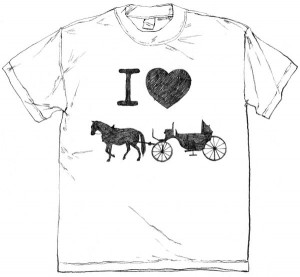The debate on whether horse carriages belong in the streets of New York City continues. Over the last few months I have published two, two-part blogs on the controversy of horse carriages in New York City. Those articles can be read here: “New York City: No Place for a Horse (Part 1/2),” “New York City: No Place for a Horse (Part 2/2),” “Horses in Cities: Part I- No NYC Horse Ban Just Yet,” “Horses in Cities” Part II – Arabbers in Baltimore.” New York Mayer Bill de Blasio is the root to the controversy, as he stated his intention to remove the horse carriages from the city altogether due to his feeling the industry is inhumane. I will argue there is a fine line of what’s inhumane about the situation at hand. Horse carriages in New York City are not in themselves inhumane. What’s inhumane in my opinion is having the horses stand for hours on hard surfaces while harnessed to a carriage and having to share space with hectic street traffic.

A solution? I think there is a positive solution to rid any question of inhumanity towards the horses while still keeping the horse-carrying business alive and the amenity available to the public. I recently read a statement by Mindy Levine, the wife of New York Yankee’s president, Randy L. Levine where she proposed the idea to have the horse carriages operate solely in Central Park along with riding stables and therapeutic riding facilities. I completely agree. I worked for a similar concept about six years ago though it was not in relation to the horse drawn carriage controversy. At the time my interest was to see more equestrian amenities provided in Central Park. Though that effort was largely unsuccessful, I still feel it would be good for Central Park and an obvious solution to the horse drawn carriage controversy. It could be the best solution.
In a recent New York Times publication written by actor Liam Neeson, the latest Quinnipiac poll proves 64 percent of New York participants want to see horse carriages remain in the city. A true advocate for horse carriages in New York City, Neeson pointed out most of the horse carriage drivers are immigrants who often times were brought up living on farms and tending for horses stating, “they love their jobs and their horses, and they take pride in being ambassadors for this great city.” I am not qualified to address that issue or the condition of the stables in which the horses are stabled, often an argument provided as proof of inhumane treatment and for eliminating the industry. If that is a problem and I have no way of knowing since I have not observed their stable care or visited the stables, then that issue could possibly be addressed without eliminating the industry entirely from the city or eliminating the drivers, grooms, or caregivers their jobs.
I will continue to be tuned in to any developments in New York City, as I am very passionate about the equine industry, the health and care of horses and would like to keep horse carriages in cities. Horses in cities are part of our heritage and I think there is a solution for retaining some form of that heritage. Fake vintage electric cars do not do it for me but neither does horse drawn carriages on busy 21st century crowded urban streets either. They belong but they belong in the park. Horses have been domesticated to be our “beast of burden” and in my opinion, there is nothing inhumane about the existence of horse carriages when treated properly and appropriately placed.